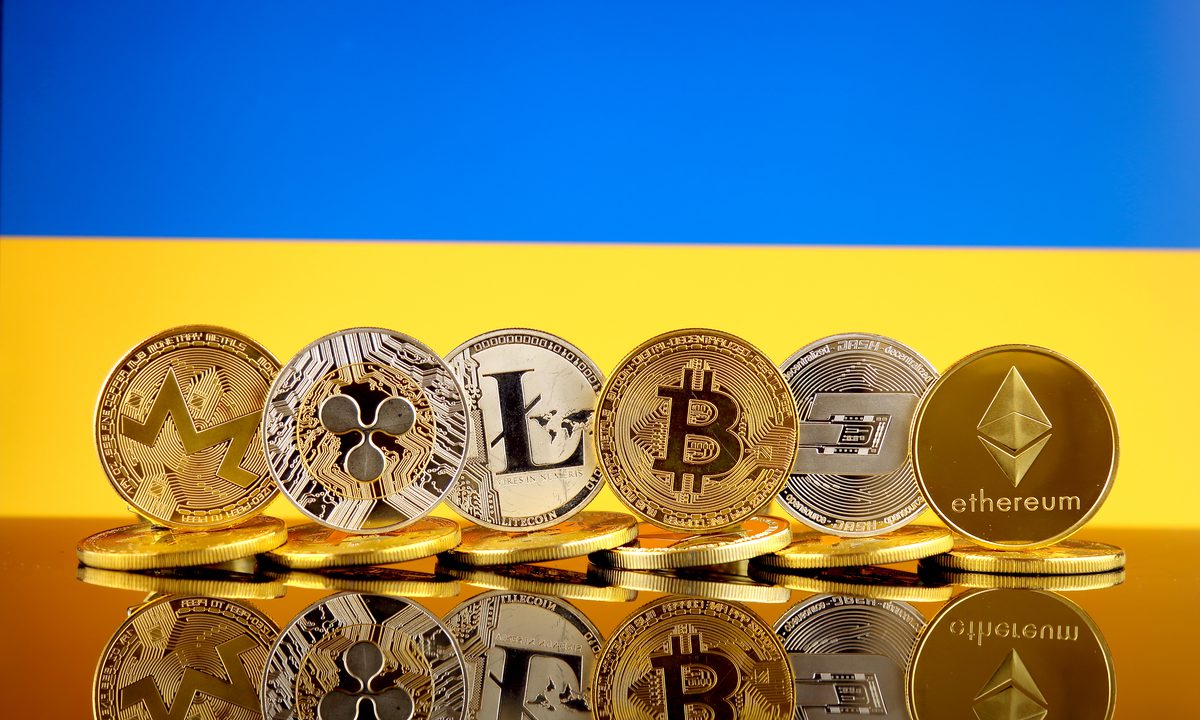Crypto Industry Icing Out Scammers as Fundraising for Ukraine Soars

Given the outpouring of support the crypto community has sent to Ukraine — with $135 million raised since Feb. 22, two days before the Russian invasion — it’s no shock to hear that scammers have pounced on it.
What may be surprising, though, is that an industry plagued by rug pulls, hacks and exploits that run into the billions every year has proven adept at spotting and cutting off the bottom feeders looking to make a fast buck off Ukraine’s suffering.
More than half of the 50 crypto fund-raising campaigns blockchain investigations firm TRM Labs has analyzed in that time have been “obvious scam campaigns” that claimed to be sending “funds to humanitarian or military efforts.”
Those campaigns, however, represented only a small percent of the funds donated, TRM said in a March 30 report.
“Most of these scams were quickly identified as such by researchers and hosting providers, and their sites were taken down,” it said. “They raised anywhere from a couple of hundred dollars to a couple thousand before being taken down.
Not very successful
Some appeared crude: One fundraising email TRM Labs claimed to be from “the Ukraine Embassy” — without specifying in which country that embassy was located.
“You have received a mail from the Ukraine embassy,” it read. “You can now stand with the people of Ukraine as we defend ourselves from Russian aggression. Now accepting cryptocurrency donations. Bitcoin, Ethereum and USDT.”
That was followed by three alphanumeric digital wallet addresses.
It closed: “Thanks, Ukraine Embassy.”
Other alleged scams TRM Labs identified were sophisticated, with QR code donation links for various cryptocurrencies, video of President Volodymyr Zelensky, and a generally slick look — all linked to appeals on Twitter and other social media sites used by legit organizations including YouTube, Discord, Telegram, Facebook and Instagram.
That puts them in good company, as many crypto firms and individuals have had their names and brand hijacked by giveaways scams and other schemes in which someone famous promises to give back double the amount of crypto sent to that address. In 2020, cross-border payments firm Ripple and its president, Brad Garlinghouse, sued (and later settled) with YouTube, alleging that the streaming site failed to take down scam sites even when reported repeatedly. Apple co-founder Steve Wozniak did the same, without success, and Ethereum creator Vitalik Buterin identified himself on Twitter as “non-giver of ETH” because of the scams.
Read more: YouTube, Ripple Reach Settlement Over XRP Lawsuit
In the case of the legitimate, Twitter-verified humanitarian crypto-fundraising organization UkraineDAO — @UkraineDAO — more than a dozen other Twitter accounts using the “UkraineDAO” popped up on a basic search, the investigators found.
Lack of Twitter verification, broken URLs and a large enough volume of new followers to suggest bot activity were among the red flags, TRM Labs said.
A new channel
Despite these scams, and to an extent because of their poor success rate, TRM Labs found that crypto has proven to be an effective fundraising tool and method.
UkraineDAO raised $6 million by auctioning a flag NFT, and when paired with another top nongovernmental organization, Come Back Alive, has raised $50 million — roughly the same amount as the Ukrainian government, which embraced — and rapidly legalized — crypto payments.
See also: Ukraine to Sell NFTs to Fund Its Military
Ukraine has also embraced crypto — and specifically NFTs — to tell its story, announcing plans for a virtual museum of images of the country and the war’s toll.
Read on: Ukraine Building an NFT Museum, Seeking a Permanent Crypto Vault for Its War Story
Loaded on NFTs, the project will be permanently secured on blockchains.
